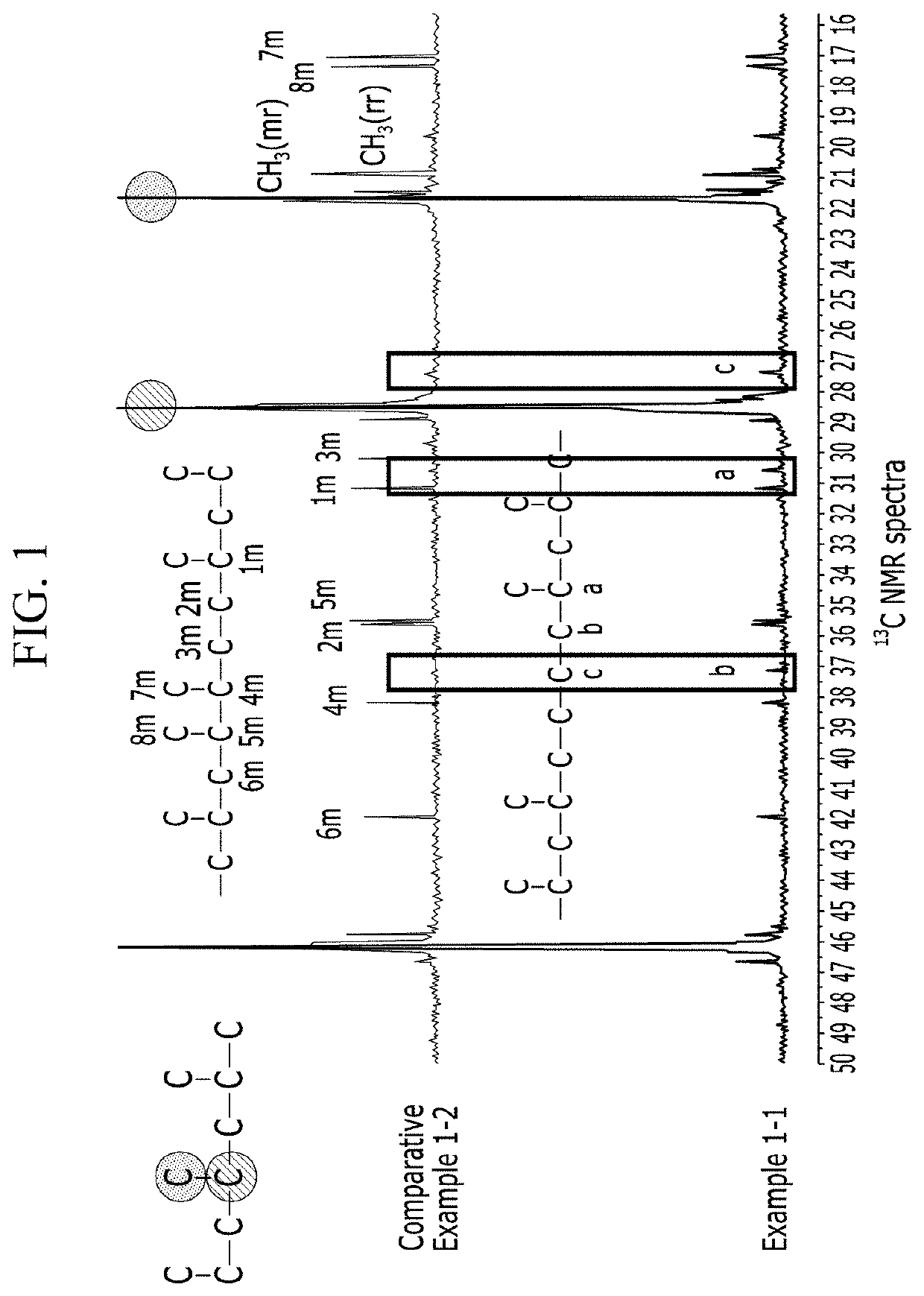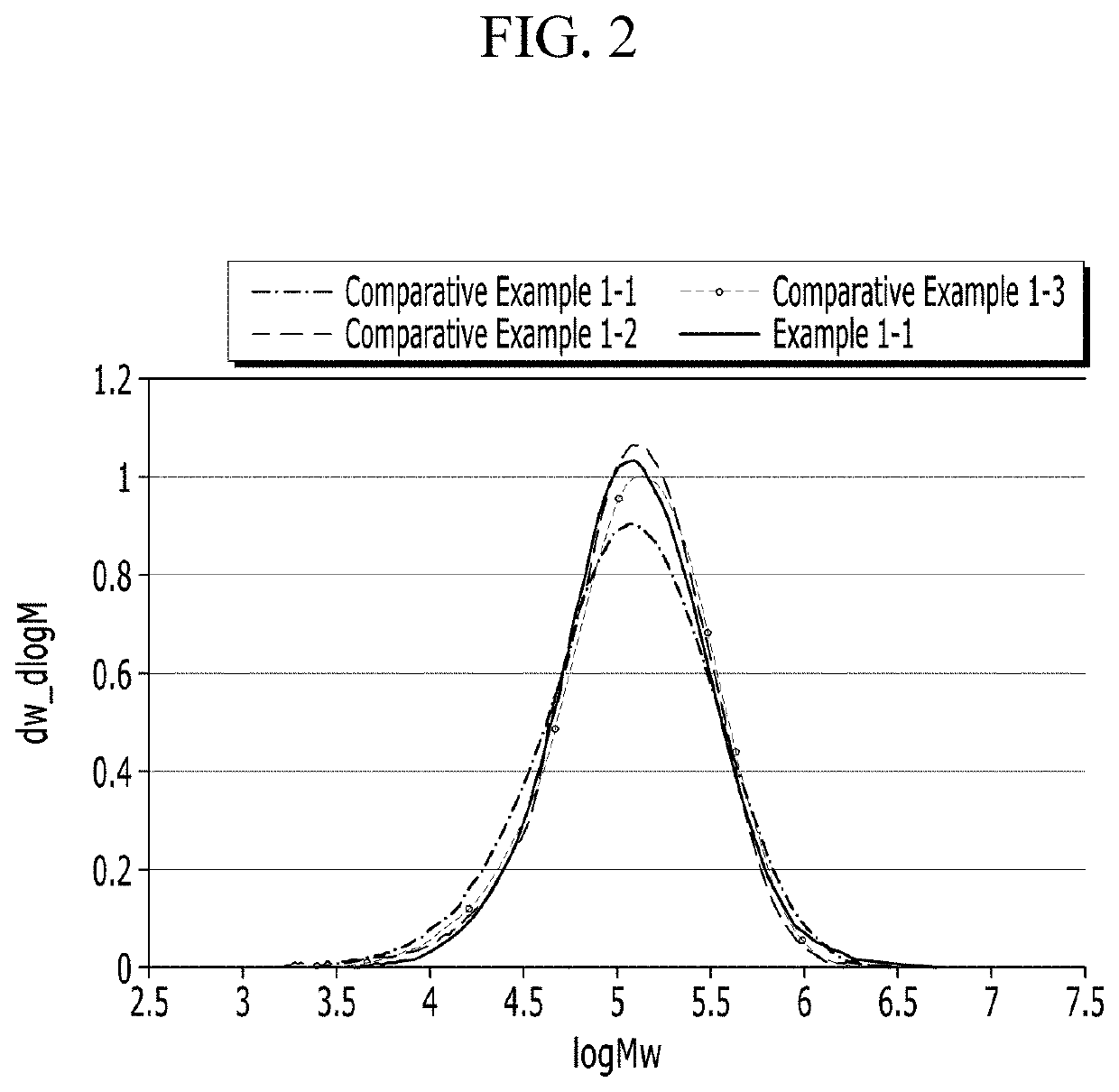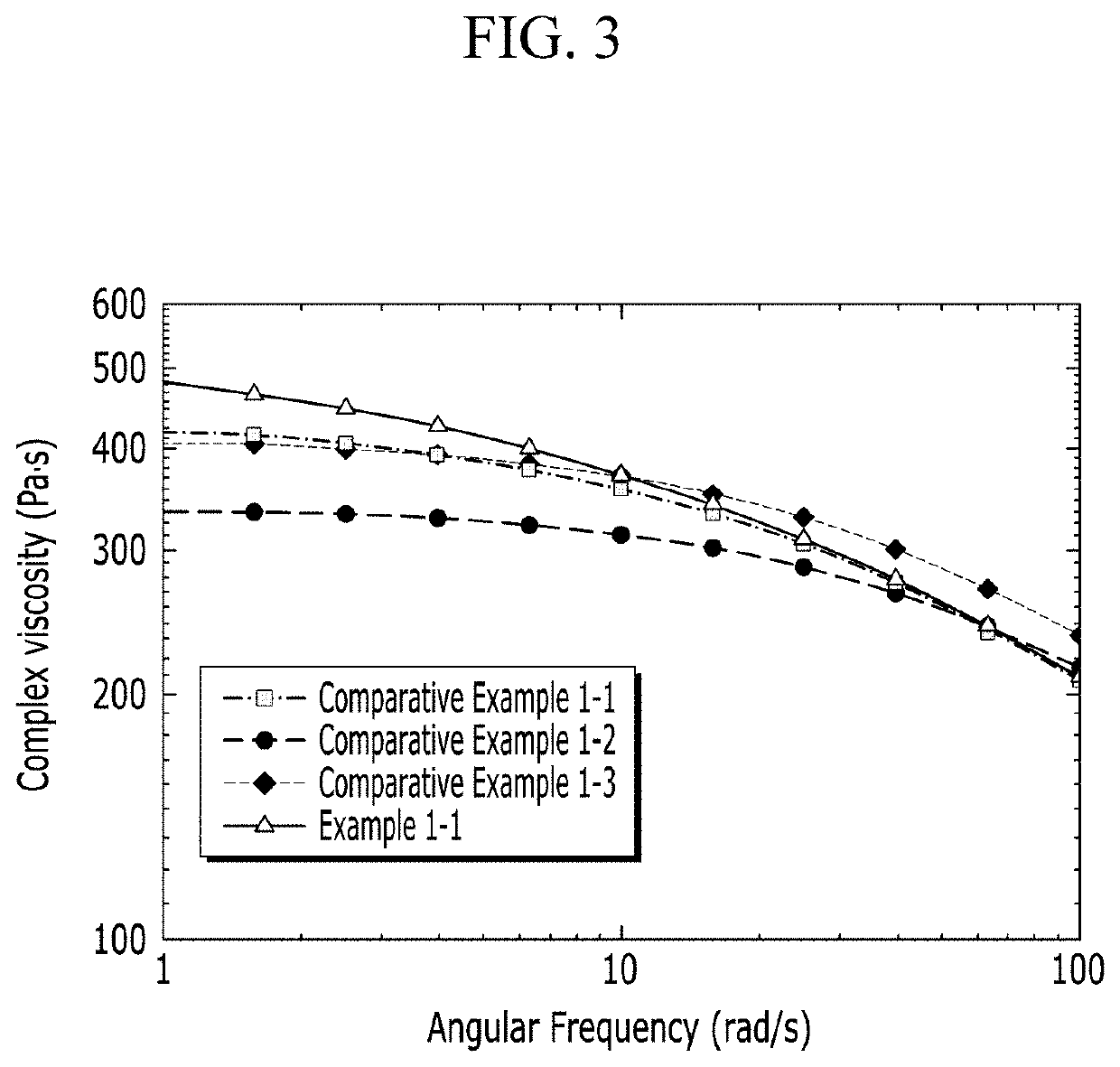Homopolypropylene And Method For Preparing The Same
a technology of polypropylene and polyethylene, which is applied in the field of homopolypropylene, can solve the problems of deterioration of physical properties and processability, inability to scour, and limitation of the desired physical properties, and achieves excellent processability, improved mechanical properties, and high strength
- Summary
- Abstract
- Description
- Claims
- Application Information
AI Technical Summary
Benefits of technology
Problems solved by technology
Method used
Image
Examples
preparation example 1
Step 1: Production of Transition Metal Compound
[0160]
[0161]The catalyst of the above chemical formula was produced by the following method.
[0162]To a 250 mL Schlenk flask, 7-tert-butylphenyl-2-isopropylindene (10.0 g, 34.4 mmol) was added and dried under reduced pressure. Under an argon atmosphere, anhydrous diethyl ether (172 mL) was added for dilution, and 2.5 M n-BuLi in hexane (36.2 mmol, 14.5 mL) was slowly added at −25° C. After stirring at 25° C. for 4 hours or more, Et2SiCl2 (34.4 mmol, 5.15 mL) was added to the reactant, and then stirred at 25° C. overnight
[0163]After the solvent was all dried, hexane was added for dilution, a G4 size glass filter was used to filter out LiCl, and the filtrate was dried under reduced pressure. To another 250 mL Schlenk flask, 7-tert-butylphenyl-2-methylindene (9.04 g, 34.4 mmol) and CuCN (1.72 mmol, 0.15 g) were added and dried under reduced pressure. Under an argon atmosphere, anhydrous toluene (208 mL) and THF (20.4 mL) were added for dilu...
example 1-1
[0176]Bulk-slurry polymerization of propylene was performed using continuous two loop reactors, in the presence of the silica-supported catalyst prepared in Preparation Example 1.
[0177]Here, triethylaluminum (TEAL) and hydrogen gas were input at contents of 50 ppm and 180 ppm using a pump, respectively, and the silica-supported catalyst prepared in Preparation Example 1 was used in a mud catalyst form in which the silica-supported catalyst was mixed with oil and grease so that the content was 16.7 wt % for the bulk-slurry polymerization. Operation was performed at a reactor temperature of 70° C. and an output per hour of about 40 kg. A homopolypropylene was produced by a polymerization process, with a propylene input amount of 81 kg / h.
example 1-2
[0178]Bulk-slurry polymerization of propylene was performed using continuous two loop reactors, in the presence of the silica-supported metallocene catalyst prepared in Preparation Example 1.
[0179]Here, triethylaluminum (TEAL) and hydrogen gas were input at contents of 50 ppm and 70 ppm using a pump, respectively, and the silica-supported catalyst prepared in Preparation Example 1 was used in a mud catalyst form in which the silica-supported catalyst was mixed with oil and grease so that the content was 16.7 wt % for the bulk-slurry polymerization. Operation was performed at a reactor temperature of 70° C. and an output per hour of about 40 kg. A homopolypropylene was produced by a polymerization process, with a propylene input amount of 81 kg / h.
PUM
| Property | Measurement | Unit |
|---|---|---|
| angular frequency | aaaaa | aaaaa |
| viscosity | aaaaa | aaaaa |
| angular frequency | aaaaa | aaaaa |
Abstract
Description
Claims
Application Information
 Login to View More
Login to View More - R&D
- Intellectual Property
- Life Sciences
- Materials
- Tech Scout
- Unparalleled Data Quality
- Higher Quality Content
- 60% Fewer Hallucinations
Browse by: Latest US Patents, China's latest patents, Technical Efficacy Thesaurus, Application Domain, Technology Topic, Popular Technical Reports.
© 2025 PatSnap. All rights reserved.Legal|Privacy policy|Modern Slavery Act Transparency Statement|Sitemap|About US| Contact US: help@patsnap.com



